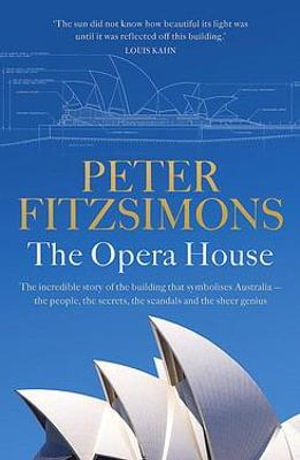The Opera House by Peter Fitzsimons

Subtitled “the extraordinary story of the building that symbolises Australia – the people, the secrets, the scandals and the sheer genius” we get a hint of the tone of this book. Meticulously researched with over 50 pages of endnotes and a preamble of 28 pages the reader is also made aware of 14 previous books on the subject before any Opera House content appears. The early part of the book is marred by the detailed raking over of Eugene Goossen’s unfortunate predilection for unconventional sex, followed by the equally detailed account of the kidnapping and death of the child of a winner of the Opera House lottery which was invented to fund the project. However, this is a great story about vision, the realities of public spending decisions, tenacity, collaboration and excellence. The significance of Bennelong Point is interesting, as is the connection to the creation of Australia’s symphony orchestras. The building itself, with its pyramid base and processional flights of stairs, just gets more extraordinary as it develops from the imagination and creative genius of architect Utzon, to the point where he has integrated a fifth façade, viewed from above, in relation to the Sydney Harbour Bridge. p. 72. The original, 1940 concept of sail roofs proves difficult to achieve in practice until the 1960 solution whereby each roof is a section of a sphere, enabling production of identically curved modules to be clad in specially commissioned white tiles; an elegant and practical solution. But the sudden death of NSW Premier Joe Cahill, champion of the project, leads to a change of government which marks the beginning of the end for Australia’s venture into architectural excellence. Budget constraints and assumption of control of the project by others lead eventually to Utzon’s resignation and the completion of the interior by others. This is a story most Australians will be familiar with but here we have 560 pages of detail covering every aspect of the subject. The unkind tone sometimes left a lot to be desired, flippant subheadings like “13 June 1962, London, in the distance, the fat lady warbles” p. 224, referring to Joan Sutherland, are inappropriate while on page 326 “the pursed purser” is too clever for its own good. When the last of the 1,056,006 tiles p. 437 completes the roof of the Opera House in March 1967 the full impact of this beautiful building becomes apparent. “When you see this building, you see Utzon” p. 437.
This book confirms that without the conjunction of a unique set of circumstances and the vision of one architect, Australia would not have the iconic Opera House. I have not read anything else by this author or on this subject and I am in awe of the research that has gone into this book but less keen on the style.
Themes: Australian History, Architecture.
Sue Speck